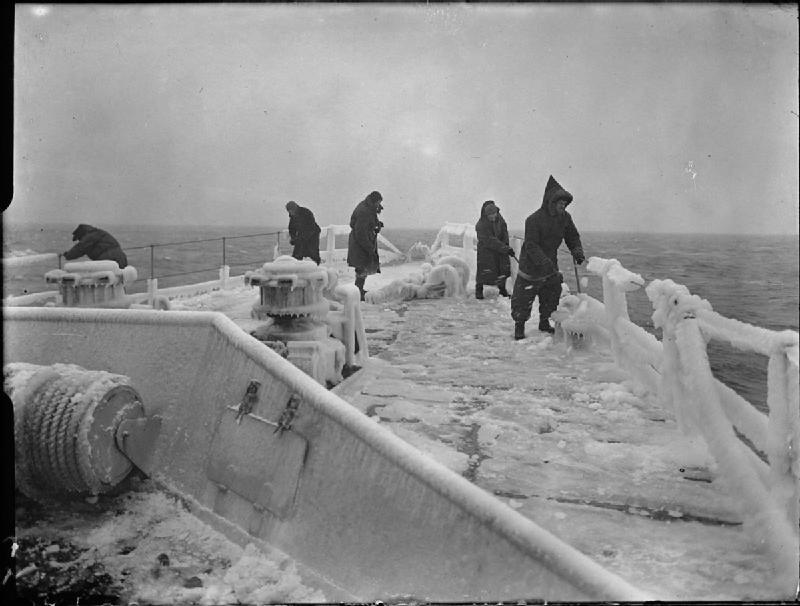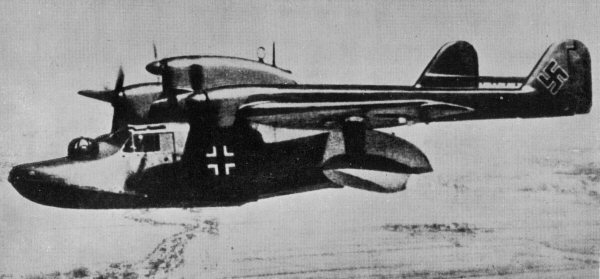|
Convoy PQ 5
Convoy PQ 5 was the sixth of the Arctic Convoys of World War II by which the Western Allies supplied material aid to the Soviet Union in its fight with Nazi Germany. The Convoy sailed from Hvalfjord, Iceland on 27 November 1941 and arrived at Archangelsk Arkhangelsk (, ; rus, Арха́нгельск, p=ɐrˈxanɡʲɪlʲsk), also known in English as Archangel and Archangelsk, is a city and the administrative center of Arkhangelsk Oblast, Russia. It lies on both banks of the Northern Dvina near i ... on 13 December 1941. Ships The convoy consisted of 7 transport ships (5 British and 2 Russian) all of which arrived safely, The close escort comprised four minesweepers and distant cover was provided by the cruiser HMS Sheffield Complete List of Ships The following information is from the Arnold Hague Convoy Database. References * Richard Woodman, Arctic Convoys 1941-1945, 1994, Convoy web {{coord, 64.5500, N, 40.4800, E, source:wikidata, display=title PQ 05 ... [...More Info...] [...Related Items...] OR: [Wikipedia] [Google] [Baidu] |
Arctic Convoys
The Arctic convoys of World War II were oceangoing convoys which sailed from the United Kingdom, Iceland, and North America to northern ports in the Soviet Union – primarily Arkhangelsk (Archangel) and Murmansk in Russia. There were 78 convoys between August 1941 and May 1945, sailing via several seas of the Atlantic and Arctic oceans, with two gaps with no sailings between July and September 1942, and March and November 1943. About 1,400 merchant ships delivered essential supplies to the Soviet Union under the Anglo-Soviet agreement and US Lend-Lease program, escorted by ships of the Royal Navy, Royal Canadian Navy, and the U.S. Navy. Eighty-five merchant vessels and 16 Royal Navy warships (two cruisers, six destroyers, eight other escort ships) were lost. Nazi Germany's ''Kriegsmarine'' lost a number of vessels including one battleship, three destroyers, 30 U-boats, and many aircraft. The convoys demonstrated the Allies' commitment to helping the Soviet Union, prior to the ... [...More Info...] [...Related Items...] OR: [Wikipedia] [Google] [Baidu] |
Soviet Union
The Soviet Union,. officially the Union of Soviet Socialist Republics. (USSR),. was a transcontinental country that spanned much of Eurasia from 1922 to 1991. A flagship communist state, it was nominally a federal union of fifteen national republics; in practice, both its government and its economy were highly centralized until its final years. It was a one-party state governed by the Communist Party of the Soviet Union, with the city of Moscow serving as its capital as well as that of its largest and most populous republic: the Russian SFSR. Other major cities included Leningrad (Russian SFSR), Kiev (Ukrainian SSR), Minsk ( Byelorussian SSR), Tashkent (Uzbek SSR), Alma-Ata (Kazakh SSR), and Novosibirsk (Russian SFSR). It was the largest country in the world, covering over and spanning eleven time zones. The country's roots lay in the October Revolution of 1917, when the Bolsheviks, under the leadership of Vladimir Lenin, overthrew the Russian Provisional Government ... [...More Info...] [...Related Items...] OR: [Wikipedia] [Google] [Baidu] |
Nazi Germany
Nazi Germany (lit. "National Socialist State"), ' (lit. "Nazi State") for short; also ' (lit. "National Socialist Germany") (officially known as the German Reich from 1933 until 1943, and the Greater German Reich from 1943 to 1945) was the German state between 1933 and 1945, when Adolf Hitler and the Nazi Party controlled the country, transforming it into a dictatorship. Under Hitler's rule, Germany quickly became a totalitarian state where nearly all aspects of life were controlled by the government. The Third Reich, meaning "Third Realm" or "Third Empire", alluded to the Nazi claim that Nazi Germany was the successor to the earlier Holy Roman Empire (800–1806) and German Empire (1871–1918). The Third Reich, which Hitler and the Nazis referred to as the Thousand-Year Reich, ended in May 1945 after just 12 years when the Allies defeated Germany, ending World War II in Europe. On 30 January 1933, Hitler was appointed chancellor of Germany, the head of gove ... [...More Info...] [...Related Items...] OR: [Wikipedia] [Google] [Baidu] |
Archangelsk
Arkhangelsk (, ; rus, Арха́нгельск, p=ɐrˈxanɡʲɪlʲsk), also known in English as Archangel and Archangelsk, is a city and the administrative center of Arkhangelsk Oblast, Russia. It lies on both banks of the Northern Dvina near its mouth into the White Sea. The city spreads for over along the banks of the river and numerous islands of its delta. Arkhangelsk was the chief seaport of medieval and early modern Russia until 1703, when it was replaced by the newly-founded Saint Petersburg. A railway runs from Arkhangelsk to Moscow via Vologda and Yaroslavl, and air travel is served by the Talagi Airport and the smaller Vaskovo Airport. As of the 2021 Census, the city's population was 301,199. Coat of arms The arms of the city display the Archangel Michael in the act of defeating the Devil. Legend states that this victory took place near where the city stands, hence its name, and that Michael still stands watch over the city to prevent the Devil's return. History ... [...More Info...] [...Related Items...] OR: [Wikipedia] [Google] [Baidu] |
HMS Sheffield (C24)
HMS ''Sheffield'' was one of the ''Southampton'' sub class of the cruisers of the Royal Navy during the Second World War. She took part in actions against several major German warships. Unlike most Royal Navy ships of her time, her fittings were constructed from stainless steel instead of the more traditional brass. This was an attempt to reduce the amount of cleaning required on the part of the crew. Her nickname, the "Shiny Sheff", stemmed from this. A prototype radar system was placed into service in August 1938 on the ''Sheffield''. It was the first vessel in the Royal Navy to be so equipped. Building Vickers Armstrong built ''Sheffield'' at High Walker, Newcastle upon Tyne. Her keel was laid on 31 January 1935, she was launched on 23 July 1936 and she was completed on 25 August 1937. War service At the outbreak of war, ''Sheffield'' served with the 18th Cruiser Squadron, patrolling the Denmark Straits and then, in April 1940, she was engaged in the Norwegian Campaign ... [...More Info...] [...Related Items...] OR: [Wikipedia] [Google] [Baidu] |
HMS Bramble (J11)
HMS ''Bramble'' was a (officially, "fleet minesweeping sloop") of the Royal Navy, which was commissioned in 1939, just prior to World War II. During the war she served as a minesweeper in the North Sea, and then on Russian convoys until sunk in the Battle of the Barents Sea on 31 December 1942 by the German cruiser Admiral Hipper and the destroyer Friedrich Eckoldt. Service history The ship was ordered on 11 August 1937 from HM Dockyard Devonport, with engines supplied by Barclay Curle. She was laid down on 22 November 1937, and launched on 12 July 1938. After sea trials in July 1939 ''Bramble'' was assigned to the 1st Minesweeping Flotilla at Portland Harbour, sailing with the Flotilla to Scapa Flow in August. She served as a minesweeper in the North Sea until February 1941, when she transferred to Harwich for operations in the Thames Estuary. In April 1941 she was transferred to Western Approaches Command for Atlantic convoy escort duty, and attached to the 3rd Escor ... [...More Info...] [...Related Items...] OR: [Wikipedia] [Google] [Baidu] |
SS Chulmleigh
SS ''Chulmleigh'' was a British merchant ship of the mid-20th century. She was in service during the first years of the Second World War and was lost in November 1942 on Operation FB, a series of individual sailings from Iceland to northern Russia. The ship ran aground on ''Sørkapp'' at the south end of Svalbard. The survivors underwent a 6-week ordeal before being rescued; only the master and eight crewmen survived. Construction ''Chulmleigh'' was built in 1938 by William Pickersgill & Sons Ltd. of Southwick for the Dulverton Steamship Co., one of W. J. Tatem's companies, registered in London and was intended for the movement of general cargo. She was long, with a beam of and a moulded depth of with a capacity of 5,445 GRT. The ship was powered by a triple-expansion steam engine fed by two single-ended boilers, giving a maximum speed of . She had a single deck, with a shelter deck and a cruiser stern. ''Chulmleigh'' was launched on 8 December 1937 and was completed in May ... [...More Info...] [...Related Items...] OR: [Wikipedia] [Google] [Baidu] |
List Of Empire Ships (Si–Sy)
Suffix beginning with e ''Empire Sidney'' ''Empire Sidney'' was a cargo ship which was built by Harland & Wolff Ltd, Belfast. Launched on 4 September 1941 and completed in May 1942. Allocated in 1943 to the Dutch government and renamed ''Van der Helst''. Sold in 1946 to Koninklijke Java-China-Japan Lijn, Netherlands and renamed ''Tjimenteng''. Sold in 1963 to Diamandis Eikidi Naftiliaki Eteria and renamed ''Diamandis''. Operated under the management of A Halcoussis & Co, Greece. Arrived on 20 January 1970 at Cartagena, Spain for scrapping. ''Empire Silas'' ''Empire Silas'' was a tug which was built by Cochrane & Sons Ltd, Selby. Launched on 13 December 1943 and completed in April 1944. Sold in 1946 to Fairplay Towing & Shipping Co Ltd, London and renamed ''Fairplay Two''. Capsized on 22 June 1947 and sank off Vlissingen, Netherlands when towing . Refloated on 13 August 1947 and towed to Antwerp, Belgium. Declared a constructive total loss but repaired. Sold in 1948 to Soci ... [...More Info...] [...Related Items...] OR: [Wikipedia] [Google] [Baidu] |
Halcyon-class Minesweeper
The ''Halcyon'' class was a class of 21 oil-fired minesweepers (officially, "fleet minesweeping sloops") built for the British Royal Navy between 1933 and 1939. They were given traditional small ship names used historically by the Royal Navy and served during World War II. Design There were 21 ships in the ''Halcyon'' class, built in two groups; the first using reciprocating steam engines, with steam turbines in the latter. They were generally smaller versions of the escort sloops. ''Niger'' and ''Salamander'' of the reciprocating group used vertical triple expansion engines, instead of the vertical compound engines of their sisters. As a result of the increased installed power they had a half knot speed advantage, even though they used slightly shorter hulls. The turbine ships used the same shorter hulls as ''Niger'' and ''Salamander'', but with lower installed power, speed dropped back to . ''Gleaner'', ''Franklin'', ''Jason'' and ''Scott'' were completed as unarmed surve ... [...More Info...] [...Related Items...] OR: [Wikipedia] [Google] [Baidu] |
HMS Hebe (J24)
HMS ''Hebe'' was one of 21 s built for the Royal Navy in the 1930s. Commissioned in 1936, ''Hebe'' served during World War II, notably taking part in the Dunkirk evacuation in 1940 and then serving in the Mediterranean, carrying out minesweeping operations from Malta. After taking part in several operations, including Operations Harpoon and Torch, and the invasion of Pantelleria, ''Hebe'' was sunk by a mine off Bari in November 1943, with the loss of 37 of the vessel's crew. Design and description The ''Halcyon'' class was designed as a replacement for the preceding Hunt class and varied in size and propulsion. ''Hebe'' displaced at standard load and at deep load. The ship had an overall length of , a beam of and a draught of . The ship's complement consisted of 80 officers and ratings.Chesneau, p. 63 She was powered by two Parsons geared steam turbines, each driving one shaft, using steam provided by two Admiralty three-drum boilers. The engines produced a total of an ... [...More Info...] [...Related Items...] OR: [Wikipedia] [Google] [Baidu] |







